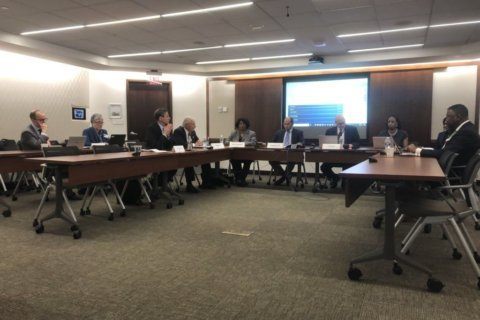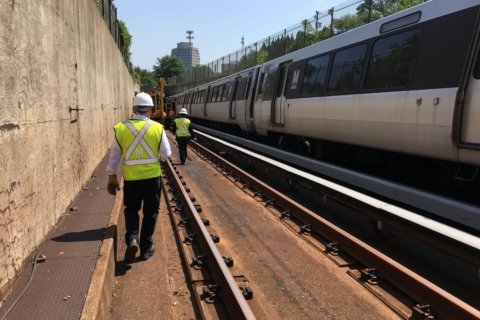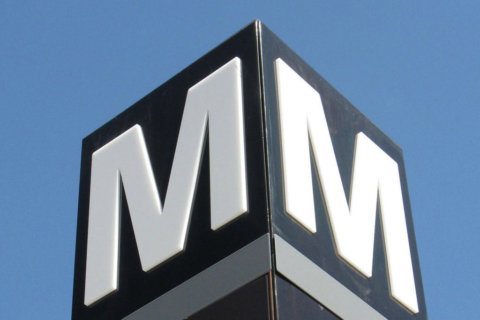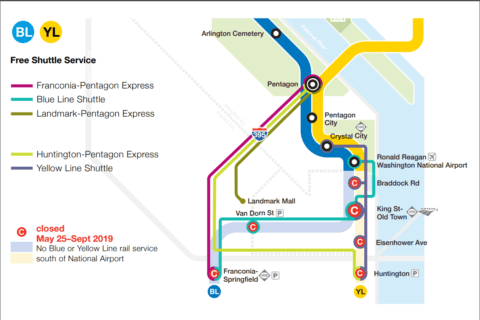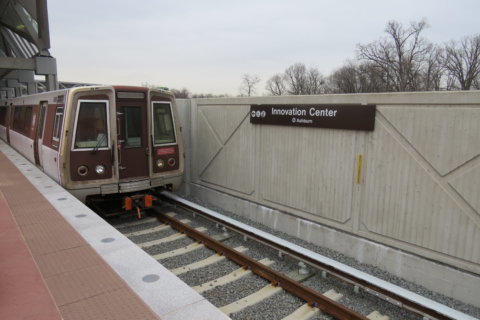A key safety step was skipped before a near-miss on the Metro tracks last month.
An initial investigation found that the designated roadway worker in charge on April 25 failed to tell a flagger on the platform to warn oncoming trains that there were workers near the tracks ahead.
A train ended up speeding toward the workers at about 40 mph, more than twice Metro’s safe speed limit when there are people on the tracks, Washington Metrorail Safety Commission CEO David Mayer said Tuesday.
A watchman alerted the crew that the train was coming, Mayer said.
The track workers in the Blue and Yellow Line tunnel between Pentagon City and Crystal City had already moved the catwalk next to the tracks, so they didn’t have to scramble to get out of the way.
However, even the safety catwalk only leaves a few inches of space between a passing train and a worker standing there, so the speed of the train still posed a potentially serious risk.
The commission is still reviewing other details of the final investigation report submitted by Metro.
They are still waiting on details of Metro’s investigations into three trains sent down the wrong tracks over the course of just a few days in March, and details of what caused a train to have an “undesired uncoupling” in April when the first two cars of a train pulled away from the other four near Wiehle-Reston East. That train was not carrying riders.
Mayer provided the updates at the WMSC’s second official public meeting.
The independent commission also heard details of two past worker safety incidents. On May 24, 2017, a trainee operator sped past workers on the tracks because the operator was not properly warned by the flagger on the platform that there was a work crew ahead. The person who was supposed to be training the operator was instead outside the cab in the passenger area, and did not have proper credentials for that role.
On March 31, 2017, a Silver Line train sped past workers on the tracks near Ballston because the train operator did not know the work crew was there. At the time, Metro alerted train operators to work crews every 20 minutes over the radio, but that train operator had only just begun his trip at East Falls Church. Metro now has revised rules, including the flagger on the station platform prior to work crews on the tracks who is supposed to provide clear communication to the train operator to slow down.
The commission’s staff also outlined a number of other steps Metro has taken to address past issues identified by the Federal Transit Administration, National Transportation Safety Board, and the old Tri-State Oversight Committee.
Metro has completed or will soon complete the process needed to fully address track inspectors overstretched to cover too large of an area, to ensure new policies get into employee rules manual, Transit Police have proper and relevant training to be safe on and near the tracks, new railcar
testing oversight, radio quality checks, and completed nearly all of the watertight seal fixes on “orange boot” cable connector assemblies identified as a contributing factor to the deadly smoke incident near L’Enfant Plaza.
Metro has completed the orange boot work on the mainline tracks, and has done at least 90% of the work in rail yards, the safety commission said. When fully complete, the National Transportation Safety Board is expected to sign off.
The commission expects Metro will be able to complete corrective action plans by the end of this year for quality control requirements for automatic train control systems and a required inventory of the tools used to inspect and maintain the systems. The systems are important to Metro operations and safety.

